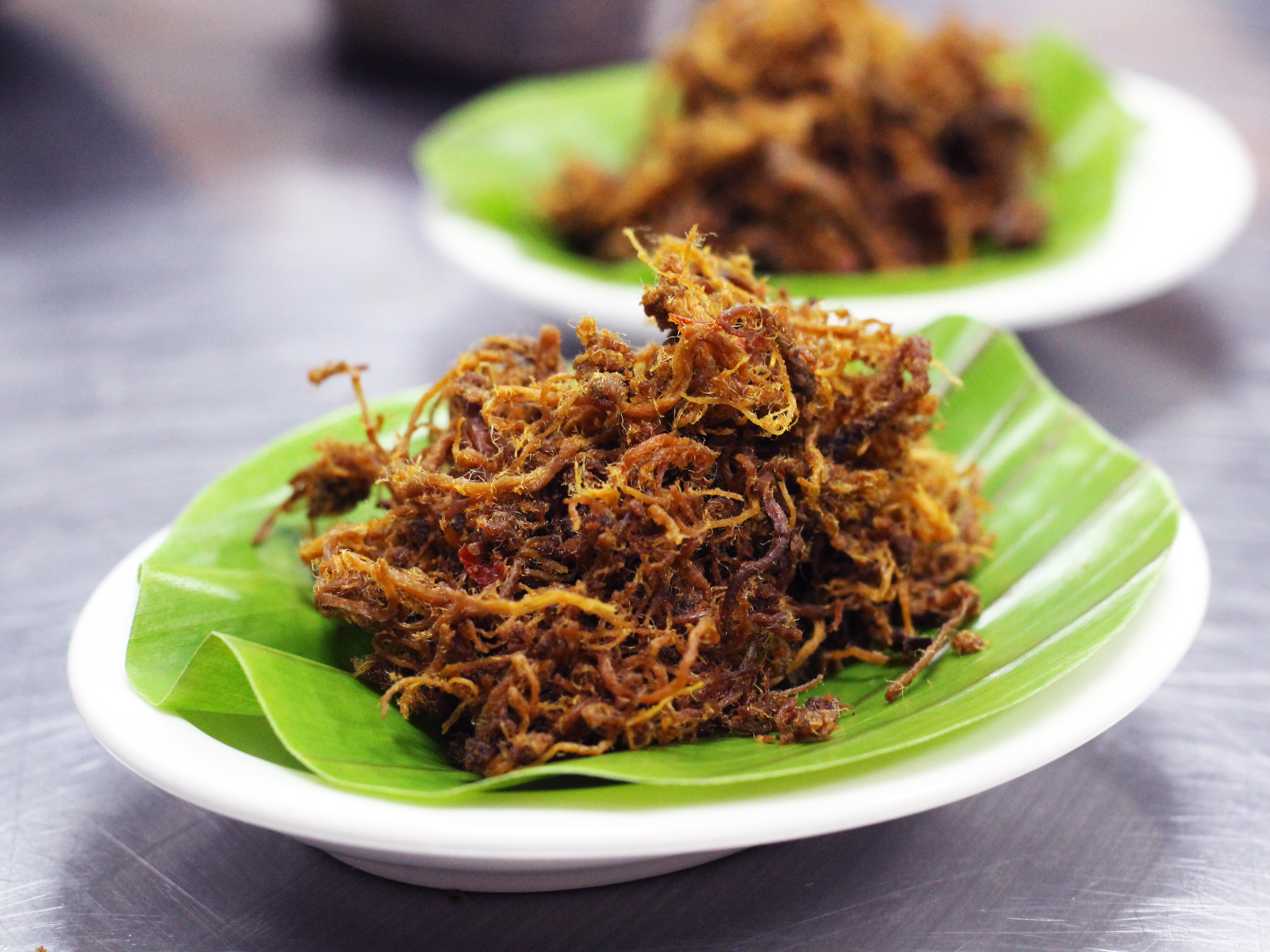Recipe Description
If you have been following our Retro Recipe series, you’d notice that we often look into the seasonal events around the world and try to share the culinary experience of various regions. So with Singapore celebrating its independence on August 9, I thought it is only appropriate that we pay tribute to its contribution to world cuisine.
Singapore has gone to great lengths to prove their claim that chilli crab had originated in the island nation and that it was invented by a couple using bottled tomato and chilli sauces in 1956. The recipe has since evolved and the current version included egg as a thickener for the sauce.
The recommended species of crabs for this recipe are mud crabs but any type of crab can be used. Flower crabs are preferred if the dish needs to be halal and they are also more easily available at the market because they cannot survive out of water. The other crab species are usually sold live in special cages, so the fishmongers at the market had informed me that they need to be ordered in advance so they can make arrangements for their delivery and storage.
You need about one kilogram of crabs for this recipe, which comes up to about two mud crabs, or three to four flower crabs. When working with live crabs, do not remove the rubber band around the claws before killing it.
The method of cleaning any type of crab is the same. The first step is to break open the triangular piece of apron from the bottom shell of the crab. Then, insert your thumb into the cavity where the apron had broken off and pull the top carapace off. It’s easier to do this with the flower crab but it works the same for a live crab. Some people recommend killing the crab first by inserting a chopstick into its mouth and pushing it in all the way, but I find that quite unnecessary.
The opened carapace will reveal the gills and organs of the crab, which you have to remove. You may keep the roe and the green or yellow mustard, which are actually the hepatopancreas (or the liver and pancreas) of the crab. If the mustard is black, grey or brown, then wash them off because they could be contaminated.
Break off the claws and you’ll be left with four legs on each side of the carcass. With a sharp knife, cut the carcass into quarters, with two legs attached to each quarter. You may also cut off the pointed tips of the legs and back swimmer, but you may also leave them on. Then with the back of the knife, crack the shells on the legs as well as the claws and knuckles.
Start the cooking with the toasting of the belacan in a dry wok before adding the oil to sauté the spice blend. If you are using belacan powder, then you can omit this step because it is already toasted. I was recommended ABC chilli sauce for this recipe but any garlicky sweet chilli sauce may be used, although I find Thai chilli sauce much too sweet and Sriracha much too spicy.
The most distinctive trait of chilli crab is the fluffy sauce, which is achieved by turning off the stove before adding the egg so that it cooks into streaks of clouds across the sea of red sauce. Traditionally chilli crab is served with steamed mantou but fried mantou has now become the norm. Steamed or fried, the bun is the right vehicle to slop up the sauce that has the balance of sweet, sour, salty and spicy.
Recipe Ingredient
- 20g belacan
- ½ cup cooking oil
- 30g tamarind pulp + ½ cup water
- 1½ cups water
- 2 mud crabs or 4 flower crabs, about 1kg
- ¼ cup tomato puree
- ½ cup ABC chilli sauce
- 1 tsp sugar
- ¼ tsp salt
- 2 tsp cornstarch + 2 tbsp water
- 2 large eggs, beaten
- For spice blend:
- 3 shallots
- ½ bulb garlic
- 4cm ginger
- 4 Thai chillies
- Garnish:
- 2 sprigs scallions, diced
- 1 sprig cilantro, chopped
- 1 red chilli, slivered
- 12 pieces mantou
- 2 cups cooking oil
Instructions
- Heat 2 cups oil in a wok to fry mantou. Remove when they turn light golden and crispy. Drain off excess oil with paper towels and set aside.
- In a dry wok, toast belacan over medium heat until fragrant.
- Add oil and heat until shimmering. Stir in spice blend of shallots, ginger, garlic, and chillies. Sauté until fragrant, about 1 minute.
- Add crab pieces, tamarind juice and water. Bring to a boil, then cover with a lid and simmer until crab has turned red, about 2-3 minutes.
- Remove lid and stir in the tomato puree and chilli sauce. Simmer another minute and season to taste with salt, sugar, and additional chilli sauce, if needed.
- Remove crab pieces from the wok and arrange on serving dish.
- In a small bowl, stir cornstarch with two tablespoons of water, add to the sauce and bring to a boil to thicken.
- Turn off the heat and stir in egg. Ladle sauce over crab, garnish with scallions, cilantro and chillies. Serve hot with steamed or fried mantou.










